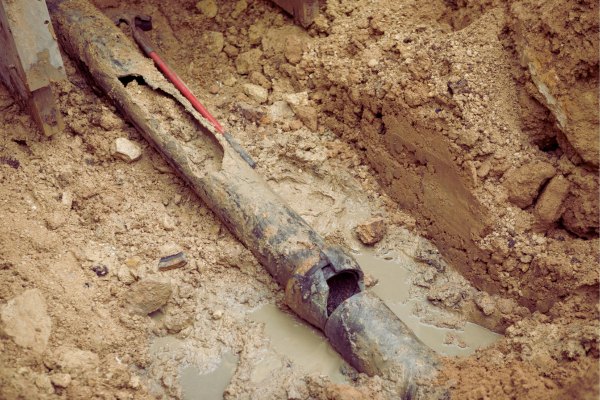Waterlogged woes are a common enemy for homeowners, and the solution often lies underground – drainage pipes. But before you grab a shovel and dive into DIY territory, consider calling in the pros. Landscapers can handle the heavy lifting (and digging!) of installing a drainage system, but at what cost? Buckle up, folks, because we’re about to navigate the murky waters of property drainage pipe installation rates.
The Factors To Consider
Forget crystal balls; predicting the exact cost of your drainage project is more like reading tea leaves. The price tag can take a rollercoaster ride influenced by several factors:
Drainage type: French drains, catch basins, dry wells – each system tackles water differently, hence different price tags. French drains, the workhorses of yard drainage, generally run between $10-$30 per linear foot, while fancy catch basins can jump to $70 per foot.
Project scope: Is it a quick downspout diversion or a full-blown yard drainage overhaul? Bigger projects involve more pipe, labor, and potentially machinery, pushing the price north.
Location: City slickers, brace yourselves. Urban landscape complexity often means higher costs compared to spacious suburban yards.
Materials: Fancy perforated pipes with fancy filters? Expect to pay more than standard options.
Landscaper’s expertise: Seasoned pros command premium rates compared to newbies.

Navigating the Cost Maze: What to Expect to Pay
Think of the cost range as a wide river; your project will land somewhere along its banks. Here’s a rough guide:
Small fixes: Diverting a downspout or fixing a localized drainage issue could cost between $500-$1,500.
Basic yard drainage: Expect $2,000-$5,000 for a French drain system covering a moderate-sized yard.
Complex drainage setups: Combining French drains, catch basins, and dry wells could push the price towards $8,000 or even higher.
Remember, these are just ballpark figures. To get a precise estimate, grab your phone and call at least three landscapers. Be prepared to answer questions about your yard size, drainage problems, and desired system complexity.
Beyond the Bottom Line: More Costs to Consider
The price tag on your invoice isn’t the only financial friend you’ll meet. Don’t forget to factor in:
Permits: Some municipalities require permits for drainage work, adding another layer to the cost.
Disposal fees: Excavated dirt and old pipes need a new home, which means disposal fees.
Repairs: Damaged landscaping during installation? Budget for sod replacement or other fix-ups.
DIY Drainage: Brave the Trenches or Delegate?
Tempting as it may be to grab a shovel and DIY, consider this: drainage systems are like buried treasure maps – mess up the installation, and you could unearth a whole lot of trouble. Trenching requires precision, knowledge of underground utilities, and the muscle to handle heavy materials. Unless you’re a DIY superhero, hiring a pro might be the saner, safer bet.
Conclusion
Investing in a proper drainage system is like buying peace of mind. No more mudslides in your marigolds, no more basement flooding nightmares – just a happy, healthy, and dry home. So, while the cost might sting a bit, remember – it’s a long-term investment in your property’s value and your own sanity. Now go forth, armed with knowledge and realistic expectations, and conquer those puddles!
FAQs
Can I get a discount if I buy the materials myself?
Maybe. Some landscapers offer discounts for homeowner-supplied materials, but others prefer handling everything to ensure compatibility and warranty coverage.
Can I finance the drainage project?
Some landscapers offer financing options, especially for larger projects. Ask beforehand and compare terms before diving in.
What guarantees do I get on the installation?
Reputable landscapers should offer warranties on their work and materials. Get everything in writing before the project starts.
How long will the installation take?
It depends on the project size and complexity. Small fixes could be done in a day, while larger systems might take several days or even weeks.
